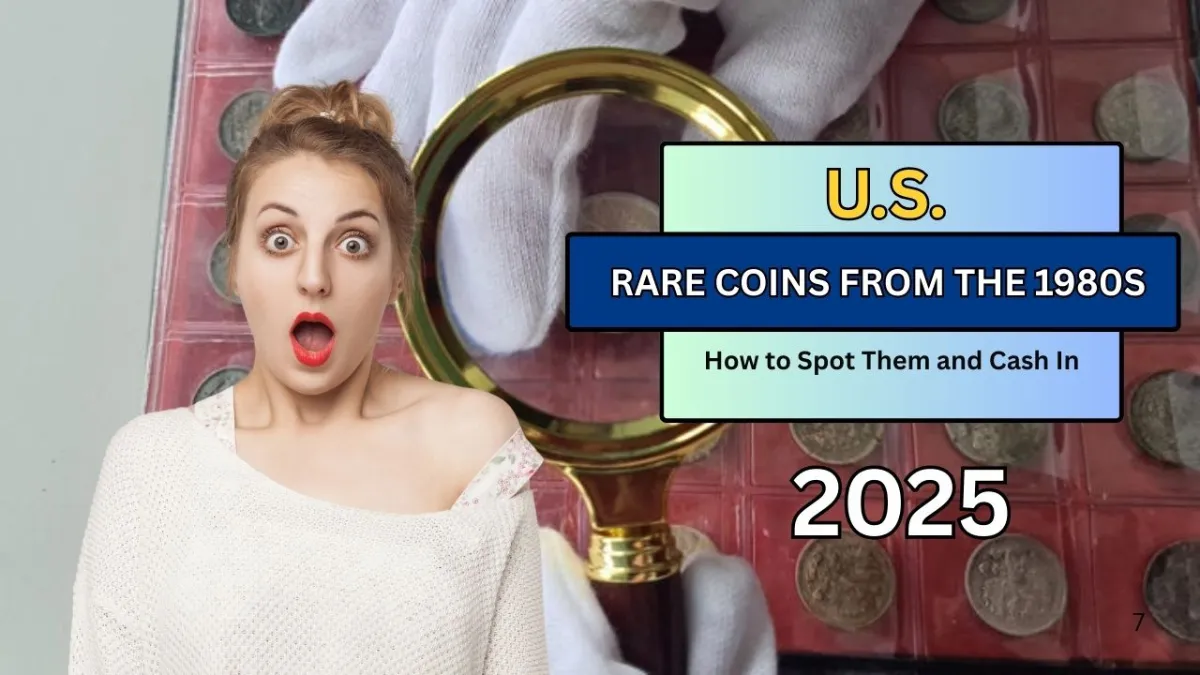The 1980s was a remarkable decade for coin collectors, marked by the U.S. Mint’s experimentation with new materials and designs. While many coins from this era are still in circulation today and worth only their face value, there are a select few that have become highly valuable due to unique minting errors and material transitions.
From the infamous 1982 Copper Lincoln Cent to the rare 1983 Doubled Die Reverse penny, these coins have captivated collectors and enthusiasts alike. If you’re a coin collector or just starting out, understanding which 1980s coins are worth thousands can be an exciting way to enhance your collection. In this article, we’ll highlight four rare coins from the 1980s that are highly prized and worth much more than their original face value.
Rare Coins from the 1980s Every Collector Should Know About
The 1980s was an exciting decade for coin collectors, marked by the U.S. Mint’s exploration of new designs and materials, as well as the production of several coins with distinctive minting errors. While many coins from this period remain in circulation and are worth only their face value, some have become highly sought after by collectors due to their rarity and unique characteristics.
Here are four rare coins from the 1980s that every serious collector should be aware of.
1. 1982 Copper Lincoln Cent
The 1982 Lincoln cent is notable for its shift from copper to a zinc alloy, a change made to reduce production costs amid rising copper prices. However, during this transition, some coins were still made with copper, making those versions rare and valuable.
Why It’s Rare: While most 1982 pennies were made with zinc, a small number were still struck in copper, creating a significant collector’s item.
Value: A copper 1982 penny can be worth up to $1,000 or more, especially if it is in mint condition (MS-65 or higher). The value increases depending on the coin’s state of preservation.
Identification: The copper version weighs 3.11 grams, compared to the 2.5 grams of the zinc version. The copper coin also has a reddish-brown color, while the zinc version appears more silvery.
For more details, visit PCGS (Professional Coin Grading Service).
2. 1983 Doubled Die Reverse Lincoln Cent
The 1983 Lincoln cent is famous for a minting error that caused the reverse side to have a doubled design. This occurred when the die used to strike the coin was misaligned, leading to a noticeable duplication of the letters and numbers on the reverse.
Why It’s Rare: The doubled die error is uncommon, and only a small number of 1983 pennies feature it, increasing their desirability among collectors.
Value: Depending on the coin’s condition, this error coin can range in value from $300 to $2,000, with the highest values given to those with well-defined doubling (graded MS-65 or higher).
Identification: Look for doubled inscriptions, particularly around the phrase “E Pluribus Unum” on the reverse. A magnifying glass or jeweler’s loupe will help you spot the error.
For further details, check out NGC (Numismatic Guaranty Corporation).
3. 1984 No Mint Mark Jefferson Nickel
Most 1984 Jefferson nickels were struck at the Philadelphia Mint and bear a “P” mint mark, indicating their origin. However, a small number of these nickels were produced without the mint mark, making them an unusual find.
Why It’s Rare: This omission was accidental, as most coins from this time period should have a mint mark. The absence of the mint mark makes these coins especially interesting and valuable.
Value: The 1984 Jefferson nickel without a mint mark can be worth between $500 and $1,500, depending on its grade and condition. Coins in mint state are typically worth the most.
Identification: Examine the reverse side of the coin, just above the word “Monticello,” to see if there is a mint mark. If it’s missing, you’ve found a rare coin.
4. 1989-S Proof Lincoln Cent (Off-Center Error)
One of the most striking errors of the 1980s is the off-center strike on certain 1989-S Proof Lincoln cents. These coins were struck with an off-center alignment, creating a distinctive appearance with part of the design missing.
Why It’s Rare: Off-center strikes are considered errors and are highly valued by collectors for their unique look. When combined with the 1989-S proof status, these coins are particularly rare.
Value: Depending on how misaligned the strike is and the coin’s condition, a 1989-S Proof Lincoln cent with an off-center error can be worth anywhere from $300 to $2,000 or more.
Identification: Look for a noticeable misalignment in the design, where part of the image is cut off due to the die being misaligned when the coin was struck.
Bottom Line
If you happen to come across any of these rare 1980s coins, it’s worth holding onto them or getting them professionally graded. Whether it’s a minting error or a material shift, these coins can be worth thousands depending on their condition and rarity. Stay vigilant and keep an eye out for these valuable treasures, as they could be hiding in your pocket change.
FAQs
What makes the 1982 Copper Lincoln Cent rare?
The 1982 Copper Lincoln Cent is rare because only a small portion of these pennies were struck in copper, while most were made of zinc. The copper versions are highly valuable.
How can I tell if my 1983 Lincoln Cent has the doubled die error?
Look for doubled inscriptions on the reverse side, particularly around “E Pluribus Unum.” A magnifying glass will help spot the error.
Why is the 1984 No Mint Mark Jefferson Nickel valuable?
The 1984 Jefferson Nickel is valuable because it was accidentally struck without a mint mark, which is rare for coins from that year.
What is an off-center strike on a 1989-S Proof Lincoln Cent?
An off-center strike occurs when the die is misaligned, causing part of the design to be cut off. This error makes the coin unique and highly collectible.
